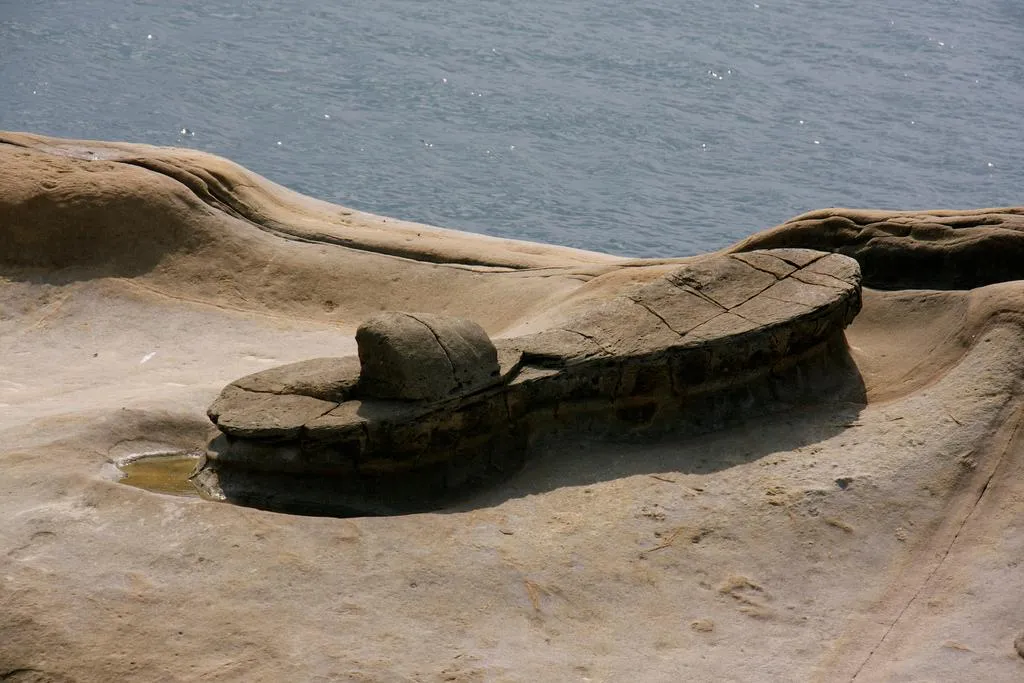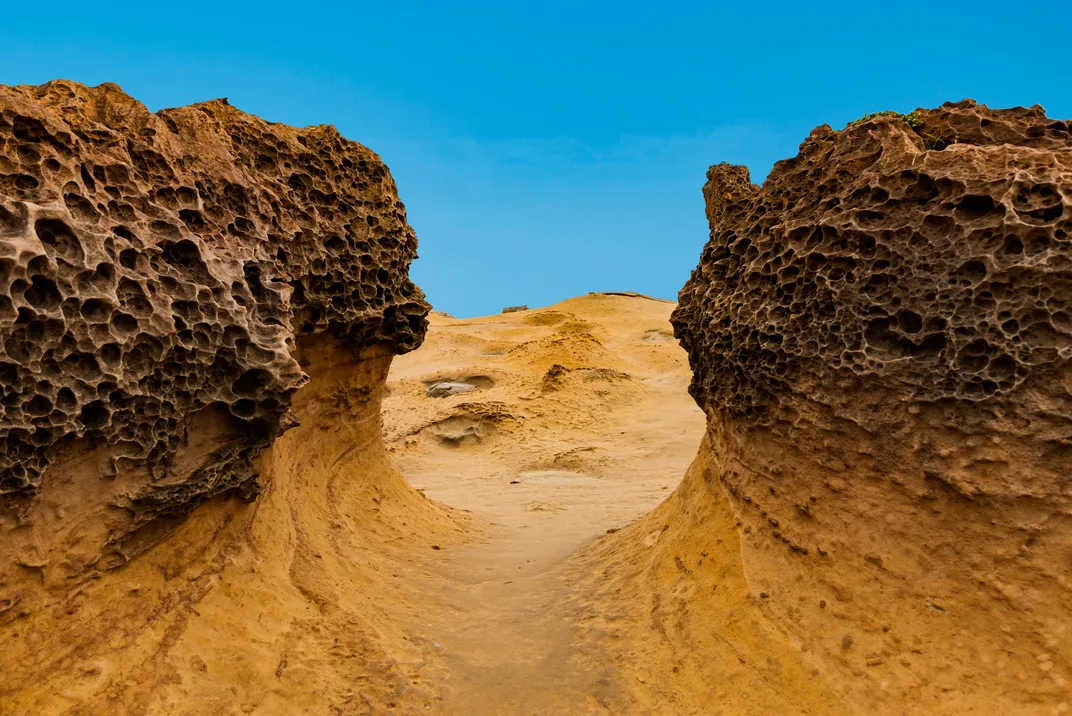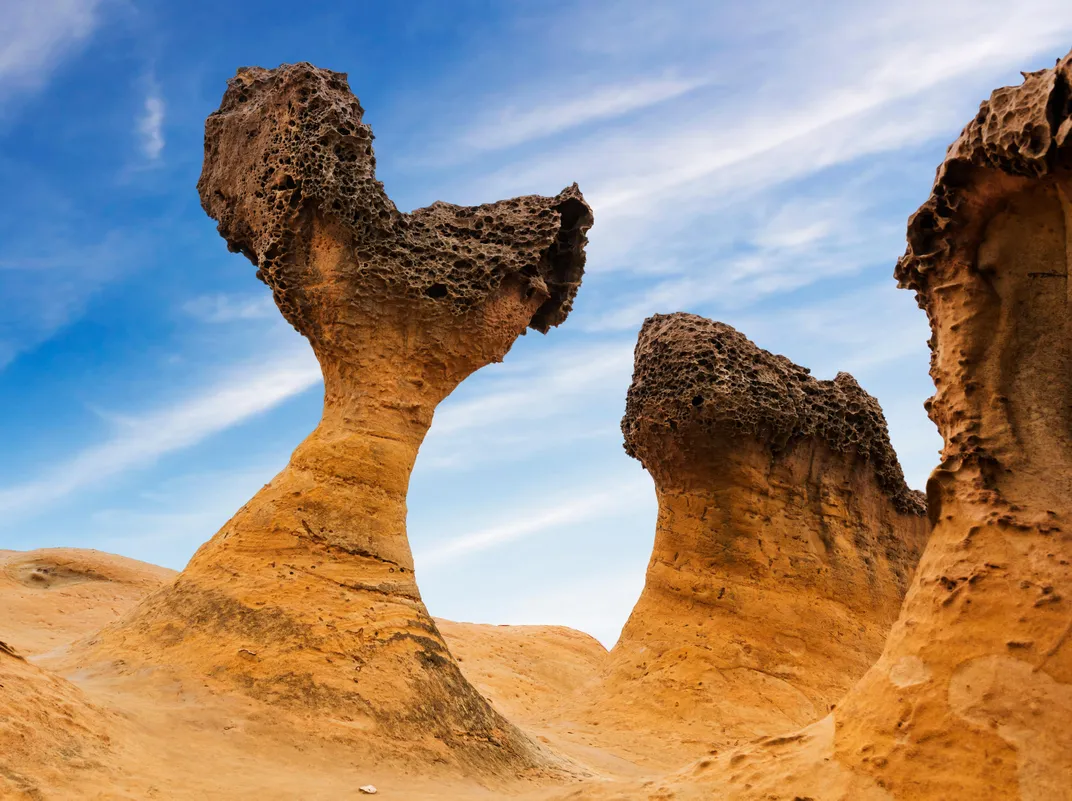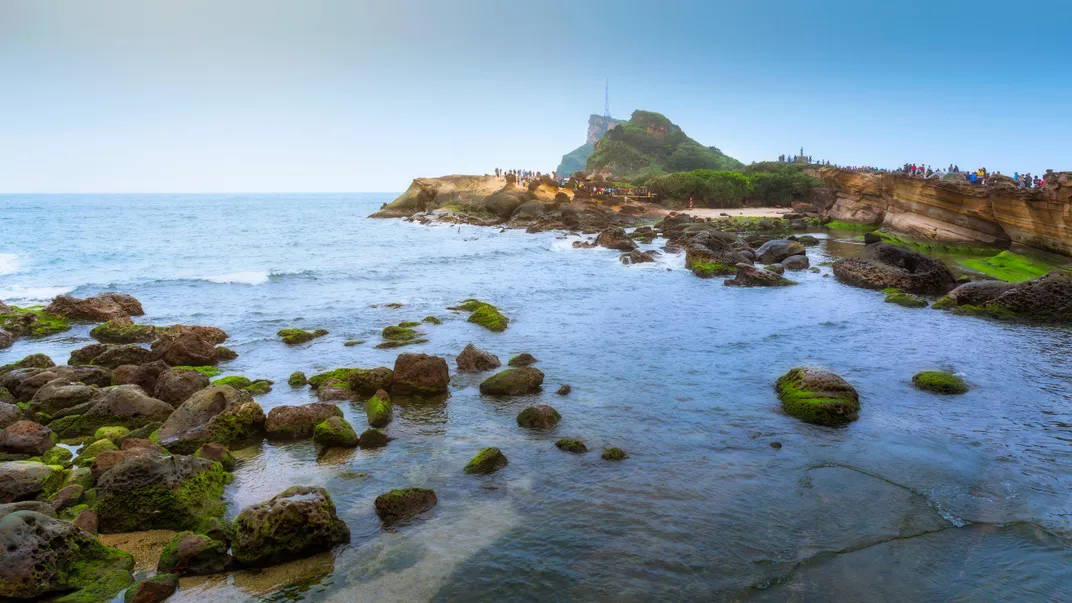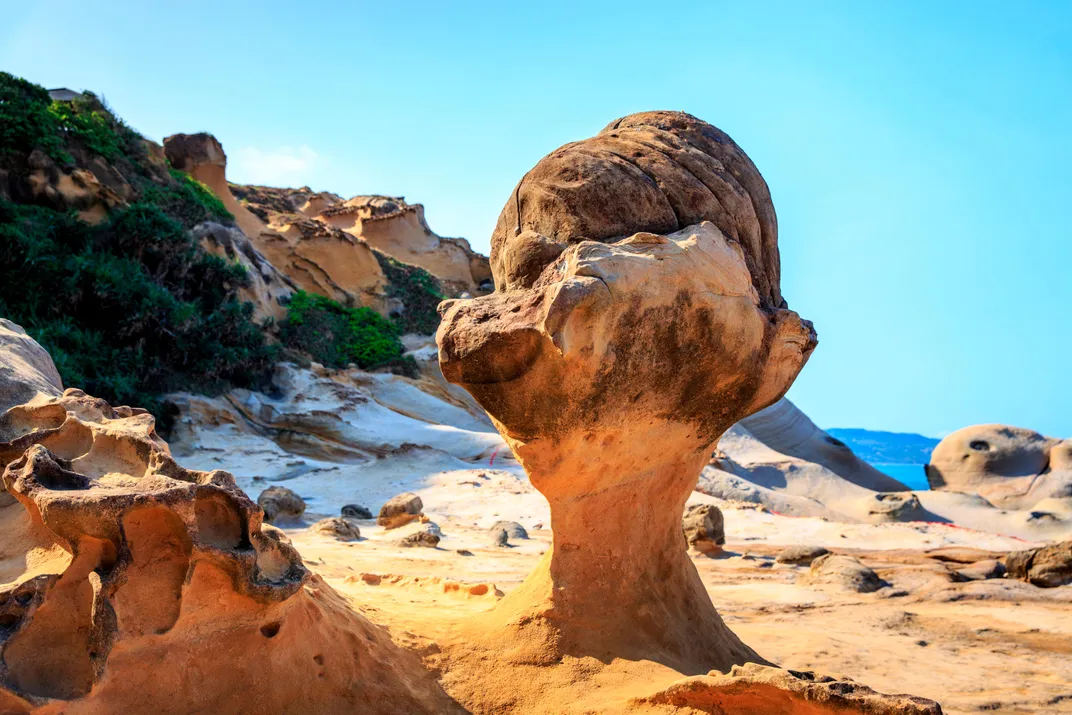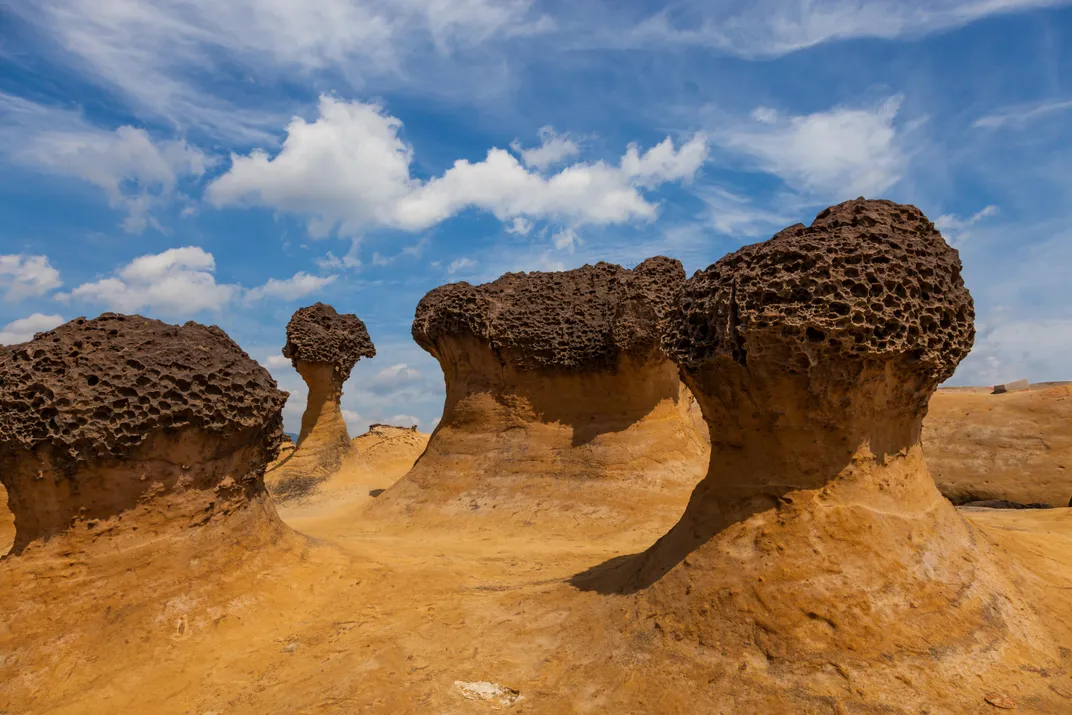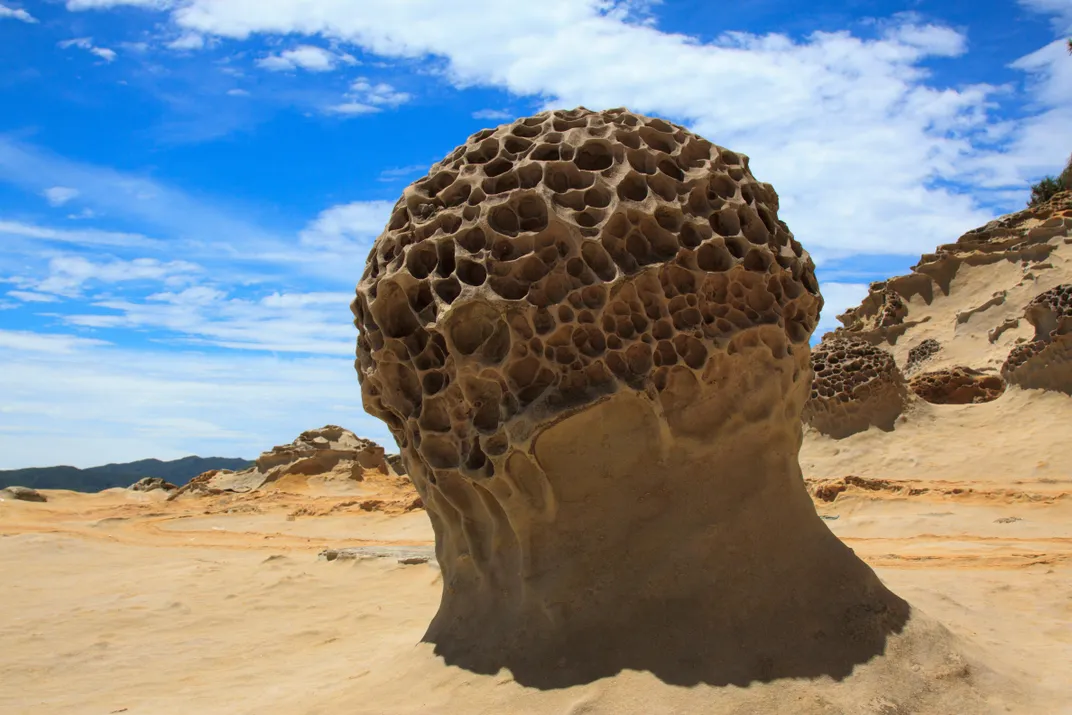Taiwan’s Yehliu Geopark Is Like Disneyland for Rock Lovers
These mushroom-like mounds are some of the country’s greatest geological treasures
About an hour outside of Taipei on a tiny peninsula in Taiwan’s northern coast sits a landscape that looks like it could belong on another planet. Here, the coastline is dotted with remarkable geological formations that jut out of the stony shoreline in shapes resembling faces, ice cream cones and giant sandals.
The coastal region of the Yehliu peninsula is mainly made up of sedimentary rocks. Over time, the constant drumming of the ocean against the shore, erosion from the wind and exposure to the atmosphere, not to mention the remains of crustaceans like sand dollars and sea urchins, have chiseled the land away into a series of protrusions and potholes. Perhaps the park's most iconic objects are the mushroom-like pedestal rocks, or “hoodoo rocks,” that dot the landscape.
Hoodoo rocks are found all over the world, particularly in high, dry, rocky regions like the North American Badlands and the Colorado Plateau. These formations can stretch anywhere from four-to-five to hundreds of feet tall. They are often composed of soft sedimentary stone capped off with harder, less-eroded rock. But the rocks at Yehliu are a different from most. Not only are they some of the only hoodoos known to form in a seaside environment, but according to a 2001 study of the Yehliu formations published in the journal Western Pacific Earth Sciences, the hoodoos are composed of the same type of rock through and through.
“We found that the head, the neck and the surrounding ground are all composed of the same type of rock,” the researchers concluded. “The only difference is the outer appearance that is more reddish [in] color [on] the outer, altered rock, due to staining of iron oxides such as hematite and/or limonite on the rock.”
The scientists found that the color differences are likely due to the top of the formations being chemically altered as seawater repeatedly collected and evaporated over centuries. Meanwhile, the stems wear away from the waves and weather, eventually causing the caps to tumble over on their sides.
The alien-looking Yehliu landscape was first catapulted to fame after Taiwanese photographer Huang Tse-Hsiu published his series “Yehliu – Forsaken Paradise” in 1962. Following his photographs, the peninsula quickly became a favorite travel destination for Taiwanese and Chinese tourists, Giulia Pines reports for Atlas Obscura. Today, people from all over travel to the Yehliu Geopark to see these unique formations.
But while more tourists visiting Yehliu means more money that will go toward protecting the landscape, it also hastens its wear and tear. Despite warnings by park staff to keep off the rocks, the formations are tempting for people to touch and climb on—all of which speeds up their weathering. One popular formation known as “the Queen’s Head” has lost about five inches in the last eight years alone, leaving park authorities worried that a "beheading" could occur soon, as the BBC reported last year.
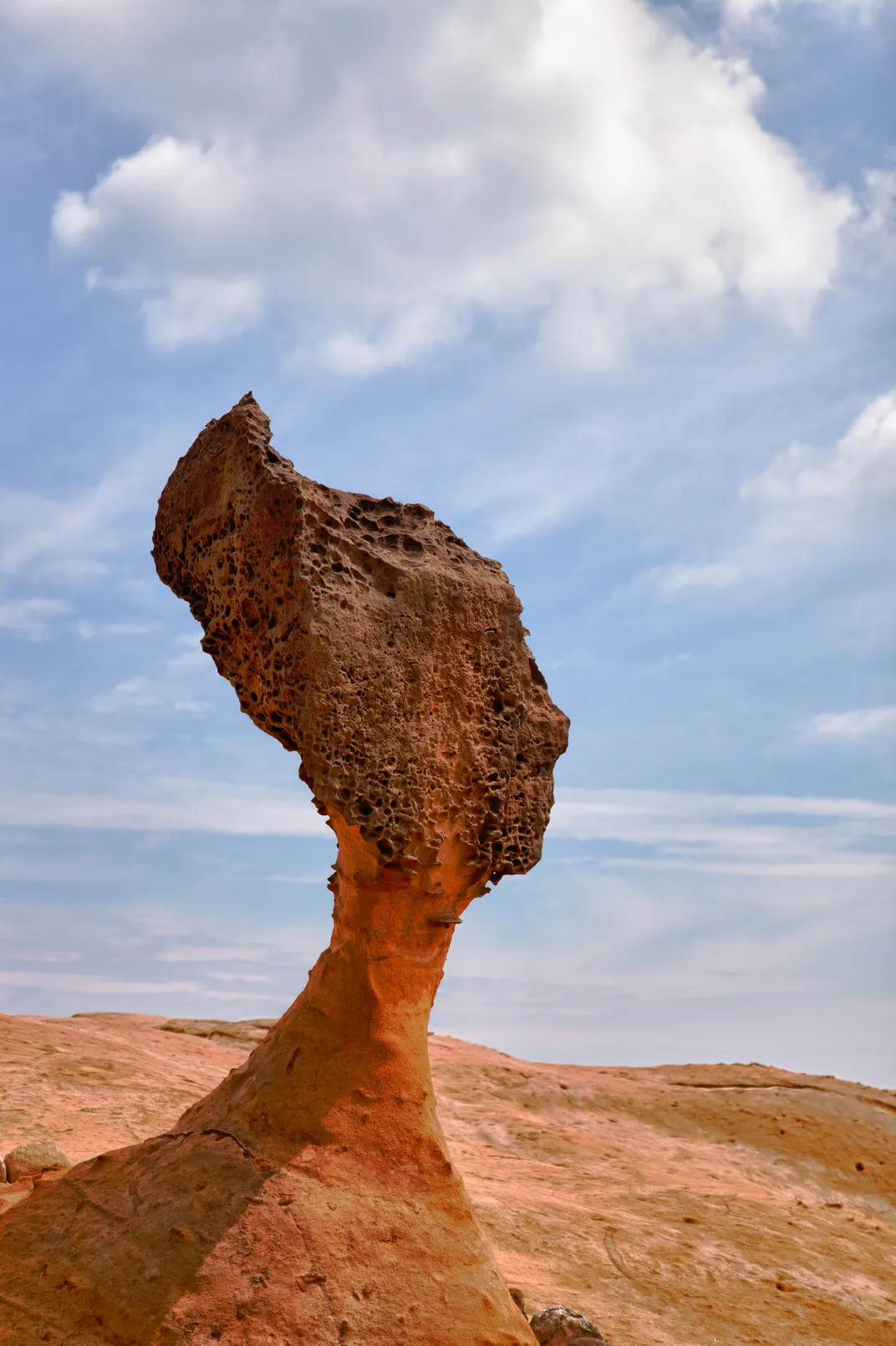
In order to protect the Queen’s Head and other popular formations, the park has built replicas and tested out special paint designed to slow down erosion. In some areas where the coastline is frequently wracked by storms, these replicas are the only remnants of famous formations.
